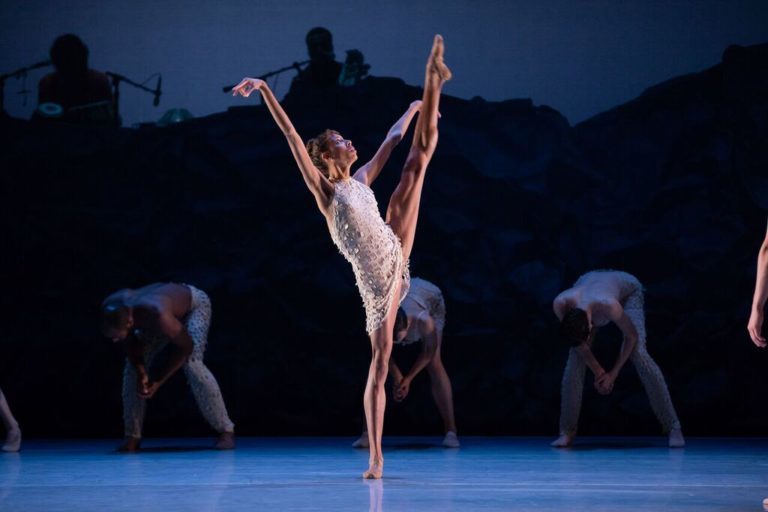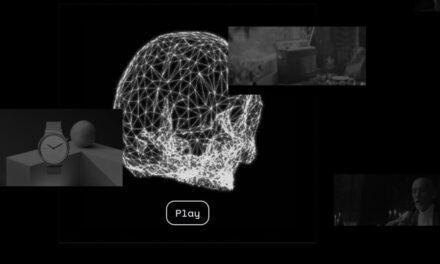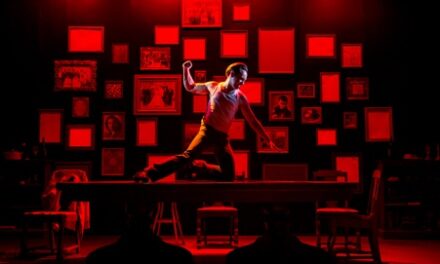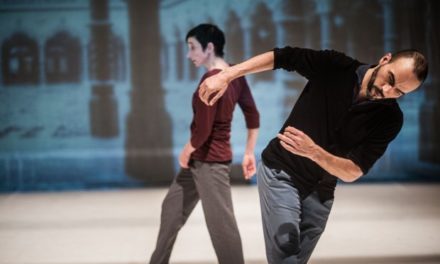What we grasp from this hypnotic evening presented by the Alonzo King Lines Ballet performing a piece called Sutra, is the sense that this group is essentially a laboratory where references from the entire world of dance are beautifully melded together to enhance an intense dialogue of smoothly orchestrated corporeal performance.
The eleven dancers, bathed in glowing earth tones, perfectly formed bodies, oiled and glistening male bodies or softly delicate female bodies wrapped in shining material dancing as individuals or combined in linked movements. Thus the group appears as a united shape twisting, turning, or coming apart and reconnecting itself. At times the corps de ballet suggests moments of Nijinska’s ballet rituals implanted in the Rites of Spring, or the great wave of moving dancers from Béjart ‘s choreography (Beethoven’s Ninth) calling out to the world to unite in peace, in all its diversity.
In fact, this performance seems to take us back to Béjart in many ways.
However, the extremely powerful compositions of exciting sounds of Indian classical and contemporary music by Zakir Hussain (The Group Shakti) and the special violent and emotionally stimulating techniques of Sarangi composed by Sabir Khan reinforce the yoga-based movements where modern contemporary dance and costumes of various origins, meet perfectly trained classical Indian movements of hands and feet and necks, associated also with classical balletic trained bodies.
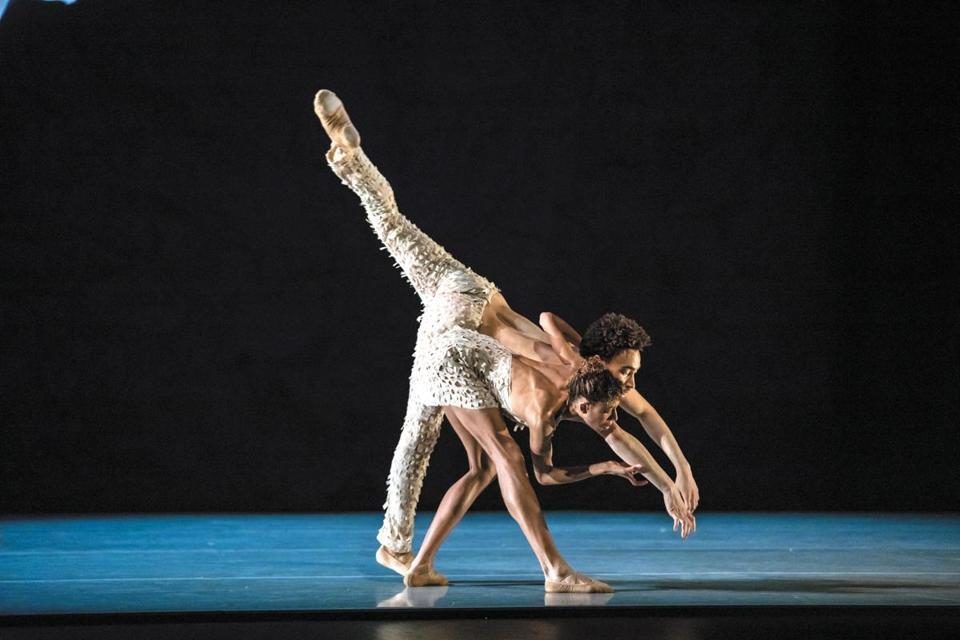
Alonzo King Lines Ballet in Sutra. Photo: National Arts Centre
Clear dance categories are not really necessary to define because the bodies all speak easily to each other. All the more so that the links between the female and male dancers assuming their own special strengths produce an exciting vision of human collaboration that breathes warmth and sensuality.
The ensemble work also grows out of Scott Bolman’s lighting and stage design, a wall of split, gray stones fused tightly together, piled up horizontally across the stage dividing the earth from the sky. The human creatures encounter each other on the lower half of the stage while the transformations from dawn to dusk and through the night are captured by the shifting lighting effects that make the sky glow, project nuances of green and red and other colours on that stone surface as the sky changes and the mists from the evening spread over the earth and flow into the audience.
Several dancers distinguished themselves as most supple, controlled creatures who barely seemed human. The segment with the elastic bands for example or the solo of a long lythe extraordinary female dancer who redefined her space with perfect ease! Unfortunately, the names were not clear on the programme but they should certainly be mentioned.
A performance that would seem to define what the world should be aspiring to create: perfect harmony, warm encounters among all human and earthly species, and a feeling that it should never come to an end.
This article was originally published in Capital Critics’ Circle on November 17, 2018, and has been reposted with permission.
This post was written by the author in their personal capacity.The opinions expressed in this article are the author’s own and do not reflect the view of The Theatre Times, their staff or collaborators.
This post was written by Alvina Ruprecht.
The views expressed here belong to the author and do not necessarily reflect our views and opinions.

